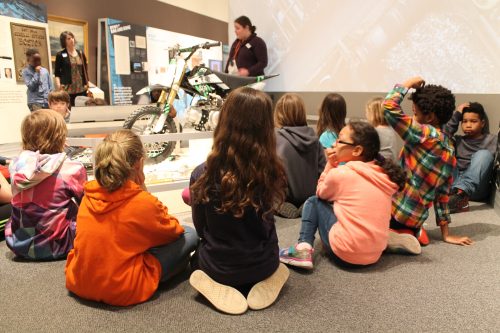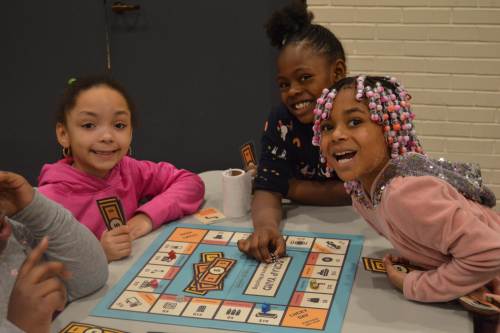A Journey Through the Yard

Adapting our Scrap Yard Education Program for a new Audience
This post was written by JMM School Program Coordinator Paige Woodhouse. To read more posts from Paige, click here!
JMM’s education brochure says that we will tailor our programs for your class. We mean it. We love an opportunity to create a unique program or adapt an existing program to better support your class.
For our current special exhibit Scrap Yard: Innovators of Recycling, JMM’s education team developed two programs – one for 4th and 5th grades and the other for 6th through 12th (you can read about it in my blog post from November, “Let’s Learn about “Scrap Yard Innovators of Recycling.”) But when 1st through 3rd-grade scholars from Baltimore Montessori Public Charter School wanted to experience our exhibit, we were up for the opportunity to adapt our program for younger scholars.

We redesigned the program with some core learning objectives in mind. Our goal was to support 1st through 3rd-grade students as they learned about recycling in their classrooms. We wanted students to come away with an understanding of what a scrap yard is, what happens at a scrap yard, what materials can be scrapped, and why scrap recycling is important.
The original programs had students stepping into the shoes of historic scrappers and learning their stories. We adapted the program for younger learners as a journey through the scrap yard, meeting the technology and materials they might find along the way.

We altered our original board game activity as well. As a part of the original program, students competed against each other to see whose scrap business would profit the most. Supply and demand played a major role in the outcome of this game. In the adapted program, students worked together to collect as many resources as possible. They made decisions together as to which scrapped objects to buy.

Each object would be broken down to provide materials – plastic, copper, paper, and/or iron. At the end of their turns, students would add up to see which resource they collected the most. With their most collected resource, teams then brainstormed all the different things they would make out of the recycled materials.

Our team enjoyed the opportunity to adapt our Scrap Yard program for younger audiences. We were delighted by the creativity and innovative ideas students contributed to the game. We hope that they will share something they learned during their visit with their community.
